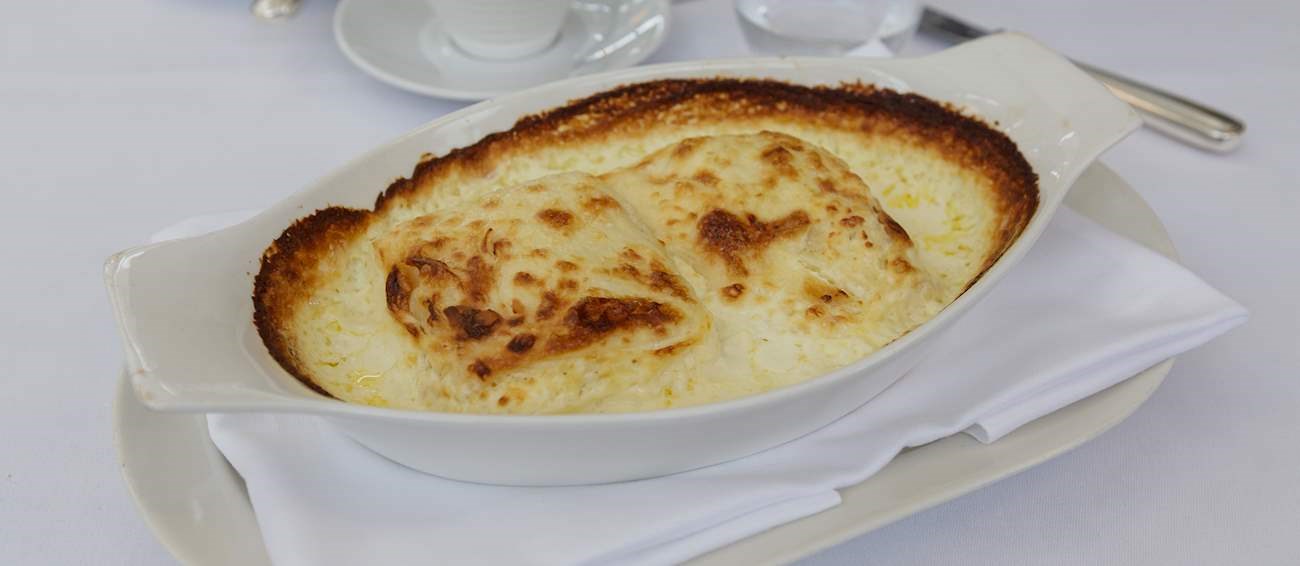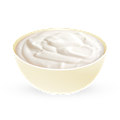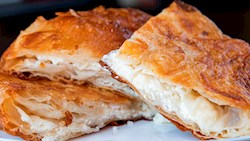MAIN INGREDIENTS
Štrukli is a rather simple 'pulled pasta' dish, which, depending on the type of filling, can be either savory or sweet. Once the dough has been pulled, filled, and rolled, it is cut into smaller pieces which can then be baked or cooked. The best-known version of this dish is the savory variety filled with fresh cheese, eggs, and sour cream, baked in the oven and coated with either butter or sour cream.
This traditional meal from the Zagorje and Međimurje regions has a long history spanning over the last several centuries. However, the dish and its many versions are known throughout all of central Croatia, as well as in the city of Zagreb.
VARIATIONS OF Štrukli
MOST ICONIC Štrukli
View moreMAIN INGREDIENTS
Zapečeni štrukli is a Croatian dish that is especially popular in the Zagorje and Međimurje regions, as well as Zagreb. The dough for these štrukli is made with flour, oil, lukewarm water, and salt, while the filling consists of fresh cow's cheese, eggs, butter, salt, and a bit of sugar.
Once the štrukli have been assembled and rolled, they are first shortly boiled, then transferred to the oven. Before baking, they are traditionally topped with heavy cream, sour cream, or a combination of both. Zapečeni štrukli are done once they develop a golden-brown color on the exterior.
MOST ICONIC Zapečeni štrukli
View moreMAIN INGREDIENTS
One of the staples of traditional Turkish cuisine, sarma consists of a filling that is snugly surrounded by leaves or leafy vegetables. There are numerous versions of this dish but the mixture typically combines ingredients such as minced meat, rice or bulgur, various herbs, seasonings, red pepper, paprika, ground sumac, or tomato sauce, while the typical wrapping usually includes vine, cabbage, or sauerkraut leaves, or a variety of leafy vegetables such as collard greens and swiss chard.
Having its roots in the Ottoman Empire, sarma is also traditionally consumed in the Balkans, the countries of Central Europe, the South Caucasus, and the Middle East. Although it is commonly enjoyed as a filling lunch or dinner (typically during the winter season), sarma is often prepared on special occasions and holidays.
MOST ICONIC Sarma
View moreJanjetina s ražnja is a popular Dalmatian dish made by roasting a whole lamb on a spit. It is roasted over an open fire until the skin becomes crispy and golden-brown in color. Before roasting, the lamb can be marinated in oil with fresh herbs, but it is traditionally seasoned only with sea salt.
When the lamb is properly roasted, it is usually served with sliced onions, green onions, or young potatoes, and a few slices of bread.
MAIN INGREDIENTS
Zagrebačka kremšnita is just one of many cremeschnitte varieties. It is a specialty of Zagreb, hence the name. This decadent cake consists of a thin layer of puff pastry that is topped with vanilla custard cream, a layer of whipped cream, and a top layer of chocolate glaze that separates this variety of cremeschnitte from the rest.
It was invented during the early 1980s by Stjepan Vincek, the owner of Slastičarna Vincek, who claims that more than 300,000 of these treats are sold per year from his establishment.
Fritaja sa šparogama is a popular Istrian egg-based dish. Its key ingredients are wild Istrian asparagus – slightly bitter and with an aroma that is reminiscent of the sea, Istrian pines, and aromatic herbs. The dish is prepared by combining the asparagus with olive oil, onions, eggs, and simple seasonings such as salt and pepper.
Fritaja should be served warm, preferably with homemade bread on the side. For extra flavor, it is recommended to top it with grated goat cheese before serving.
MAIN INGREDIENTS
Zagrebački odrezak is a Croatian meat dish consisting of veal cutlets that are pounded, filled with cheese and ham, rolled, breaded, then fried until golden and crispy. Nowadays, the dish has many variations and some cooks prepare it with pork, chicken, or turkey.
It is important that the cheese melts well, and the ham should have minimal fat. Once prepared, this succulent meat dish is typically accompanied by lemon wedges, rice and peas, potatoes, and green salads.
MAIN INGREDIENTS
This festive Croatian dish consists of a whole roasted turkey, paired with an authentic Croatian side dish known as mlinci. The dish has its origins in the Zagorje region, where turkey has been brought over from Italy by the Pauline Fathers in the 15th century.
Specific breeding and growing conditions have led to the creation of an autochthonous Zagorje Turkey breed that is praised for its exceptional quality of meat. Mlinci, on the other hand, are best described as a cross between pasta and crispy, unleavened flatbread.
MAIN INGREDIENTS
Krvavice are blood sausages produced mostly throughout continental Croatia, especially in the regions of Zagorje, Istria, Dalmatia, and Slavonija-Baranja. Apart from Croatia, the sausages are also commonly consumed in Slovenia and Serbia. They're made by cooking pork blood, skin, and offal with rice and either buckwheat, barley, or cornflour, unlike most other European blood sausages that use oats or oatmeal as fillers.
However, there are numerous varieties of krvavice and every cook has his own recipe, so the ingredients may vary. The names also vary, and they're also called divenice, devenice, or kulenice. These sausages are traditionally consumed during winter when they are often accompanied by sauerkraut and a combination of boiled potatoes and sautéed onions known as restani krumpir.
VARIATIONS OF Krvavice
MAIN INGREDIENTS
Punjena paprika is a ground meat dish that's prepared in many variations across the Balkans, in countries such as Croatia, Bosnia, Slovenia, Serbia, and Hungary, among others. The dish consists of bell peppers that are stuffed with a mixture of ground meat (veal, pork, or both), rice, and spices.
Punjene paprike are a quintessential summer dish in Croatia – sarma is reserved for winter, while punjena paprika is a summer staple. The meat and rice mixture is typically seasoned with onions, salt, pepper, and paprika powder. Once stuffed, the bell peppers (usually green bell peppers) are cooked in tomato sauce with a bit of flour and garlic, and they are then served with mashed potatoes on the side.































